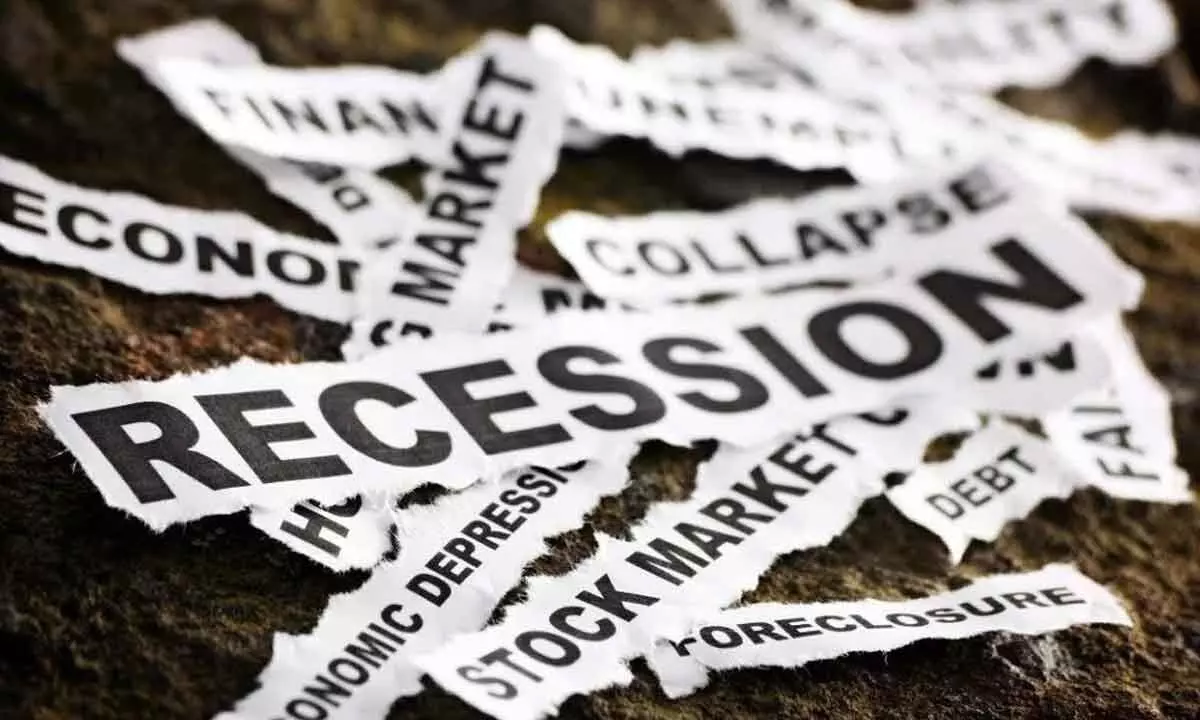Economists and govts keeping fingers crossed over impact of recession
China’s property slump and stagnant euro zone economy may see world growth slump to 2.1%
image for illustrative purpose

In a soft landing, the price of goods doesn't drop even though the rate of inflation steadies. Instead, over time, wages increase to boost purchasing power again. Among economists, the consensus appears to be that they don't expect stagflation to return in the next year
Economists are predicting a year of slow growth around the world in 2024. Consumer spending is slowing down, with further uncertainty ahead.
Global growth is projected to slow for the third consecutive year, reaching 2.4 per cent in 2024, down from 2.6 per cent in 2023. Among global economies, developing countries' economies will be hit harder, growing at just 3.9 per cent, far below their pre-pandemic average.
The US economy performed better than expected in 2023, which led the World Bank to announce that the recession risk had receded for the country in 2024.
Growth across the world held up well in 2023 driven by a normalisation of consumption in China and a pick-up in US growth, which have outweighed a sharp slowdown in Europe in the wake of last year’s regional energy shock. But with the full impact of recent monetary tightening still to be felt, China’s ongoing property slump and the euro zone economy stagnating, world growth is expected to fall sharply to 2.1% in 2024, Fitch Ratings says in its latest Global Economic Outlook (GEO) report.
However, the economic fallout from wars in Ukraine and the Middle East, coupled with persistent high inflation, make the possibility of growth "sluggish."
Apart from the aforementioned markers, the unemployment rate is another way to measure whether a recession is in the cards. Consumer sentiment is another key indicator of recession. The cost of living crisis has caused people to spend less, which in turn lead the economy to contract. In a recession, both employment and consumer spending drop. Graduates and school leavers could also face more difficulty finding work.
As stock markets fall, the value of investments declines. There is an increase in foreclosures as people default on debts and banks are less likely to lend. These factors combine to lower the government's tax take, making its budget deficit even larger. This is even as government spending on social programs and unemployment rises.
When stock markets fall during a recession, this can lead to panic in the markets. Since World War II, there have been 12 recessions in the US. According to Goldman Sachs, the US index of stocks–the S&P 500–contracted by a median of 24% during these downturns. Corporate profits (as well as stock prices) would go down in a recession. If companies are unable to raise prices because of low spending, corporate earnings fall. This can lead to layoffs. As stock markets fall, the value of investments declines. There is an increase in foreclosures as people default on debts, and banks are less likely to lend.
When stock markets fall during a recession, this can lead to panic in the markets. Since World War II, there have been 12 recessions in the US. According to Goldman Sachs, the US index of stocks–the S
On average, US recessions have lasted for 17 months. However, since the 1980s, several recessions have lasted less than 10 months on average. At the outset of the Covid-19 pandemic in 2020, there was a two-month downturn in the economy that qualified as a recession despite its short duration.
The labour market is the first place to show signs of a recession, but there have been strong numbers there, with 353,000 jobs added to the US economy this January. However, job numbers are only part of the picture. The number of full-time workers has decreased and the number of hours worked is falling. Credit card delinquency is on the rise, with one top economist stating that the consumer credit default cycle has arrived already. Currently, one in every 12 credit card holders is missing their payments. Another indicator, retail sales, has also shown signs of falling. There was a 0.8% decline in retail sales numbers in January.
Economists have been talking about a "soft landing" occurring rather than a full-blown recession, but it's unclear if that's still possible. A soft landing is when the economy slows enough to bring inflation down to the Federal Reserve’s 2% target, without falling into recession. In a soft landing, the price of goods doesn't drop even though the rate of inflation steadies. Instead, over time, wages increase to boost purchasing power again. Among economists, the consensus appears to be that they don't expect stagflation to return in the next year. Time will tell.
In a soft landing, interest rates would remain higher than in a full-blown recession. In a recession, interest rates would probably be cut lower.
Whether 2024 sees a soft landing or a recession by the summer is unclear. However, economists are setting the tone, which seems to be one of preparing for the worst.

